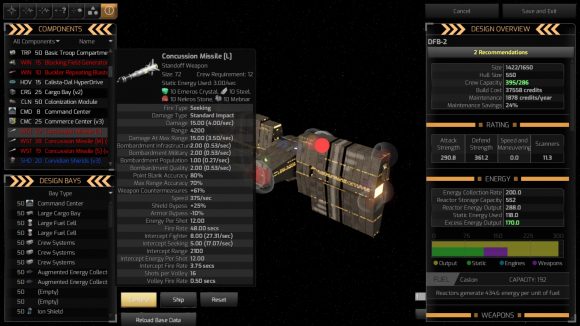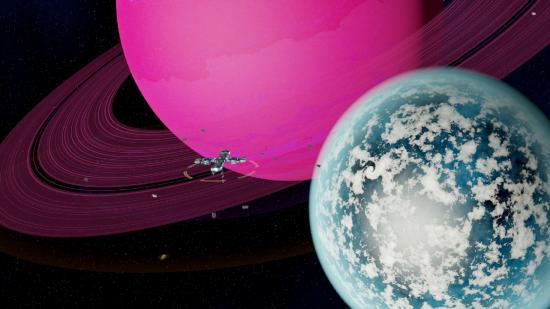Distant Worlds 2 is one space strategy game that’s been on our radar ever since it was announced earlier this year. Currently scheduled for release early next year, it presents players with a living galaxy, teeming with private enterprise, pirates, and powerful space monsters beneath the usual humdrum of the ‘big’ empires.
Distant Worlds’ place within the space 4X genre is distinct – if not wholly unique – and the developer Code Force’s main aim was less to reinvent it for new audiences, but rather to bring the established premise into the modern age with new, 64-bit tech.
“With Distant Worlds 1 we had a lot of great ideas,” game director Erik Rutins tells us, “but we were a generation behind in terms of the game engine.” One of the team’s primary goals was, as Rutins puts it, to “correct that gap” and ensure Distant Worlds 2 is a game that existing fans could recognise and enjoy, while also being confident that it was a modern game. “It was actually a huge goal and a huge amount of work for us, given the size the team,” he observes.
Distant Worlds 2 certainly looks gorgeous, based on the brief live demonstration we were given. A lot of work has gone into updating the game’s visual identity, not just making the planets and star systems feel alive, but individual ships as well.

The new ship designer will show a 3D render of what your space vessel will look like on the map, and the model dynamically adapts to whatever modules you decide to include. Equip cannons to the sides and the armour mesh changes to look like these things have been organically melded into the ship. Remove them, and it was like they were never there to begin with.
This work has been done across seven launch factions and 13 additional independent factions that won’t be playable immediately. Every faction possesses some 30 models, with all of the extra add-ons on top of that. And that’s not the only thing Rutins and his team have been focusing on.
“We wanted to maintain the living galaxy and use the new engine to allow us to make that better,” Rutins says. “We wanted to make the areas that were harder for new players to grasp easier, to make the UI and the UX more approachable, and to make all the information that needs to be the top level more actionable, because a lot of that stuff evolved over the course of Distant Worlds 1.”

With resources available, however, there has had to be some prioritisation on what gets an uplift and what doesn’t. The tech research screen, for example, looks largely as it did in the first game, although there have been plenty of functionality and quality-of-life improvements.
On the flipside, Distant Worlds 1’s espionage system has been brought into Distant Worlds 2 pretty much as is, as Rutins says the team was “fine with how that was for the initial release.”
It’s the little things that stand out in Distant Worlds 1 and we suspect the same will be true here. The automation tools were so comprehensive that you could hand over your entire empire’s development to the AI, take a ship, and go off on a Star Trek-style romp through the galaxy.
This kind of functionality is making a return in Distant Worlds 2, and with the enhanced galaxy visuals, and not to mention new camera angles that let you get right up close to the world around you, going off on an adventure will take on a whole new dimension.
Regardless of where the team has chosen to focus in terms of priorities, so far things seem to be shaping up nicely. This will definitely be one of those information-heavy strategy games, much like the older Paradox grand strategy games, but there’s already plenty here to look forward to.
Related: The best space games on PC
Distant Worlds 2 is due out on PC via Steam and the Slitherine store sometime in Q1 2022.

